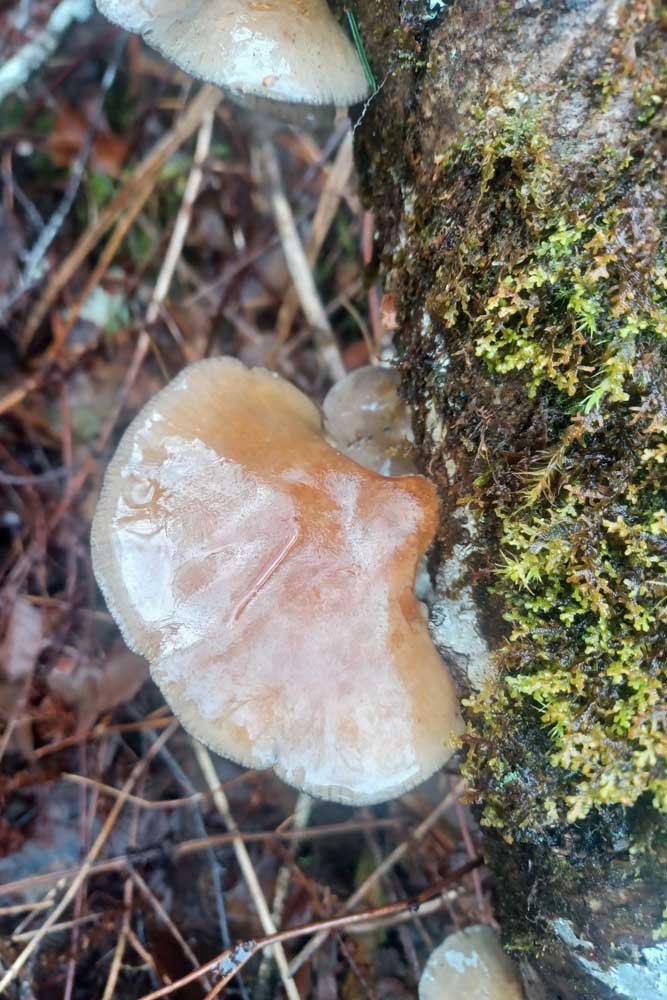Rainy Rambles: Cold-weather outdoor activities
Published 9:00 am Sunday, November 24, 2024

- A late fall oyster mushroom seen in December.
Fall has descended across the Pacific Northwest with windstorms and driving rain in recent weeks, which can dissuade people from going outside.
Certainly, there are things most of us would be very reluctant to do this time of year — the frigid waves here are better watched than surfed for all but the most stubbornly polar bodyboarder. But that doesn’t mean we only have to enjoy nature from the safety of our living rooms.
Here are a few ideas for getting outside through the short days of the year.
Hiking
The Columbia-Pacific region has a great variety of trails of all lengths and difficulties, from waterside pathways to mountain peaks.
If the wind’s blowing, it’s best to stay away from tall trees, but if winds are limited to the coastline and inland breezes are less severe, get out for a nice stroll, even if it’s just in your neighborhood.
On rare sunny days, the Discovery Trail on the Long Beach Peninsula and the Warrenton Waterfront Trail can be good options that can be adjusted to any length.
Birdwatching
This region is a crucial sanctuary for migratory birds year-round. That includes species that nest in the Arctic in the summer months, but retreat down here for a relatively balmy winter.
A plethora of waterfowl, shorebirds and other migrants find food and shelter on the Columbia River and its tributaries, Willapa Bay, and out on the open ocean. Plus, trees and meadows make great places to see other seasonal specialties like varied thrushes and fox sparrows.
You might need to drive around a bit to find the best spot to break out the binoculars or set up a spotting scope, but keep your eyes peeled anywhere you go to see our local avian neighbors.
Nature photography
Whether you’re a film aficionado, a DSLR diehard, or happy just clicking away with your phone, nature offers plenty of beautiful vistas and captivating details to take pictures of.
In fact, this is one of the better years for wildlife photography because so many plants have lost their leaves that it can be easier to get that shot of a bird or mammal in the trees.
Anyone with even the slightest artistic eye can appreciate the aesthetic appeal of moss-covered branches darkened by rain or the drama of a deep gray sky over crashing waves.
Count the evergreens
We have a surprisingly green winter on the west side of the Cascades, especially at lower elevations where snow is less common. Unlike some places where almost all the plants are deciduous, losing their leaves in fall, we have a decent number of species that retain their foliage year-round.
There are, of course, the conifers whose needles are a perennial fixture. But keep your eyes peeled for less towering plants like Pacific wax myrtle, evergreen huckleberry, and western sword fern. The ground cover offers some greenery as well, like trailing blackberry and a whole host of mosses.
Winter foraging
Some of our cold-weather species are edible. If you feel comfortable in your ability to positively identify a plant or fungus by species, you might head out and do a little foraging.
Most mushrooms are done fruiting by the time winter arrives, but you might still find yellowfoot or hedgehog mushrooms in the hills. Sitka spruce is one of several conifers whose fresh needles make a delightfully refreshing tea.
And while dandelions may have slowed their growth this time of year, their greens can still be steamed or otherwise cooked, while the leaves and roots alike add to your tea stash.
Scenic driving
OK, so this isn’t as outdoorsy as some people like, but if you aren’t as tolerant of the cold weather, or if the messy conditions are more rugged than you’re able to handle, there’s nothing wrong with enjoying nature through the windshield.
Our area has numerous vistas with parking lots or pullouts, or which are a short walk to a great view (and a short retreat back to the warmth of the car).
No matter how you choose to enjoy the outdoors this time of year, please use appropriate caution. Be mindful of weather conditions and how they can affect the safety of your environment.
Take extra care by the ocean or other large waterways, as waves and currents can be higher and stronger during winter storms, and even a brief immersion in cold water may be deadly. If we have a rare bit of lightning, it’s best to take cover, and should road conditions be icy, delay heading out until all is clear again.




